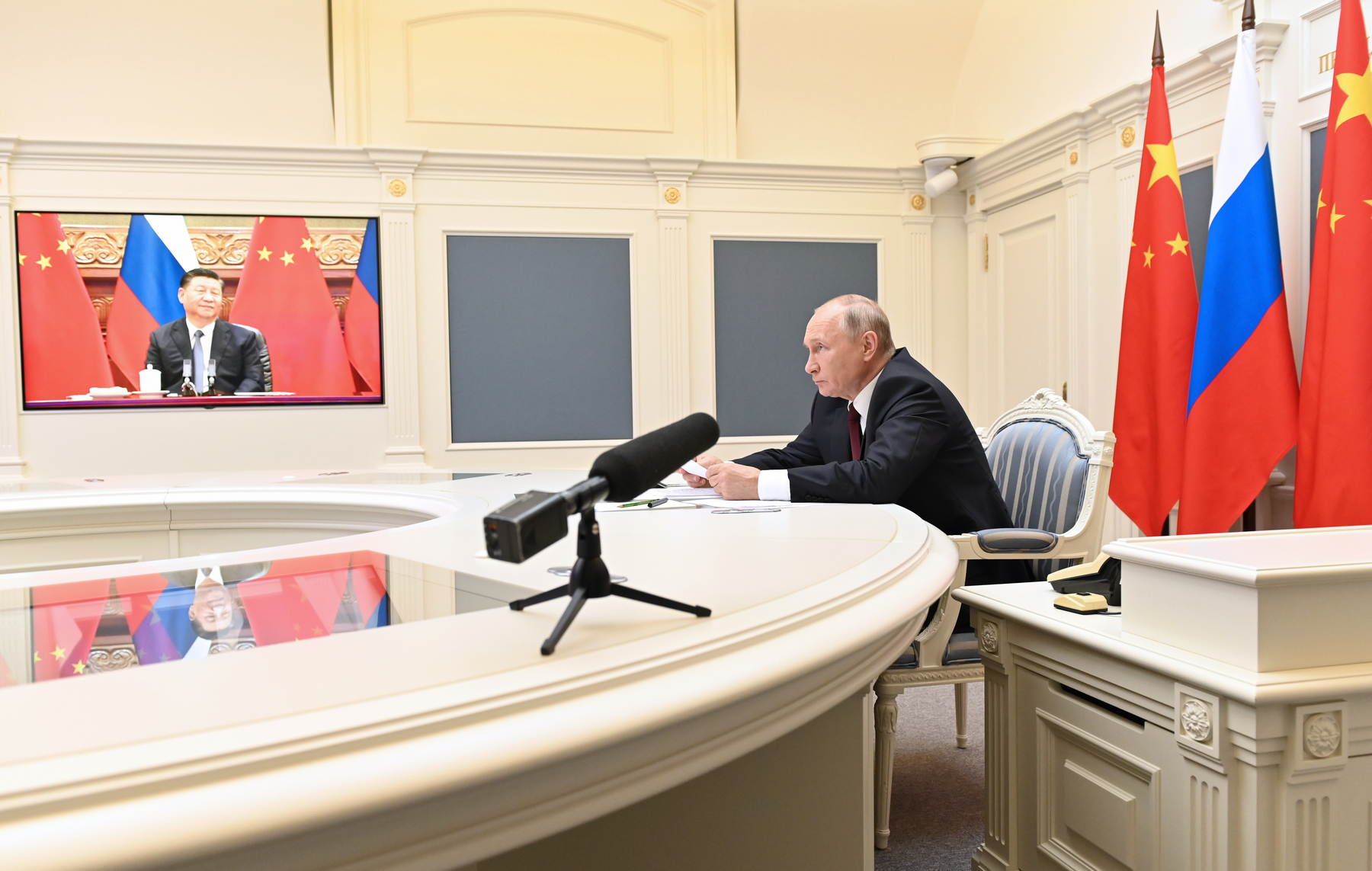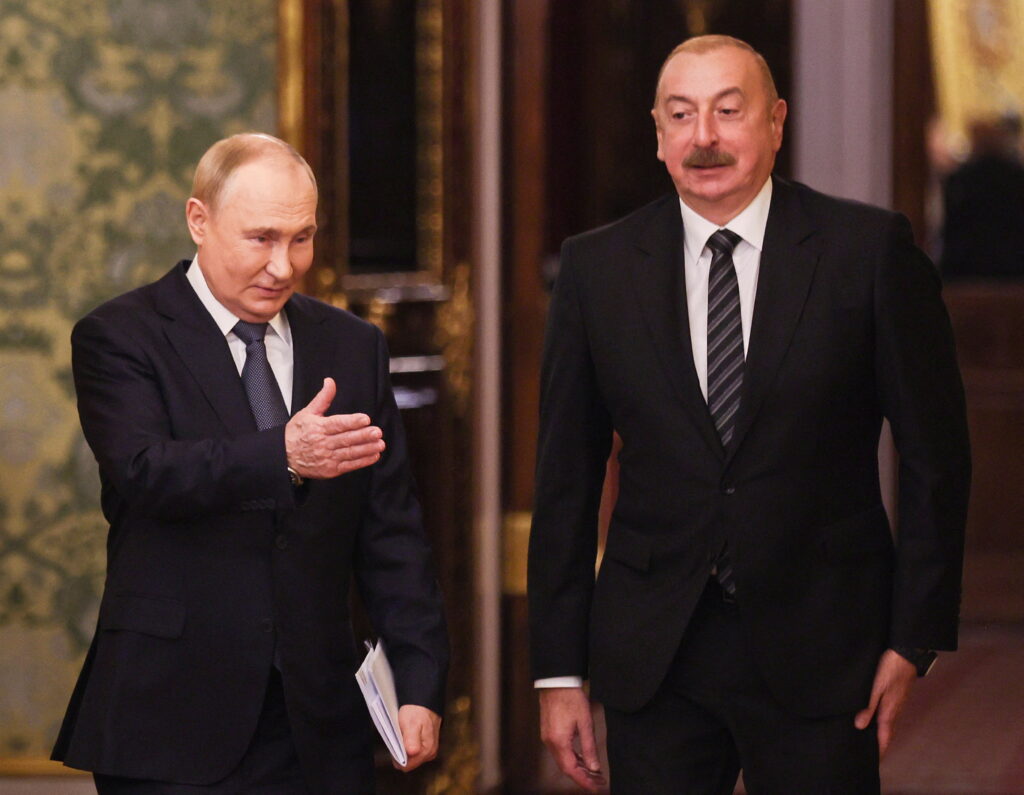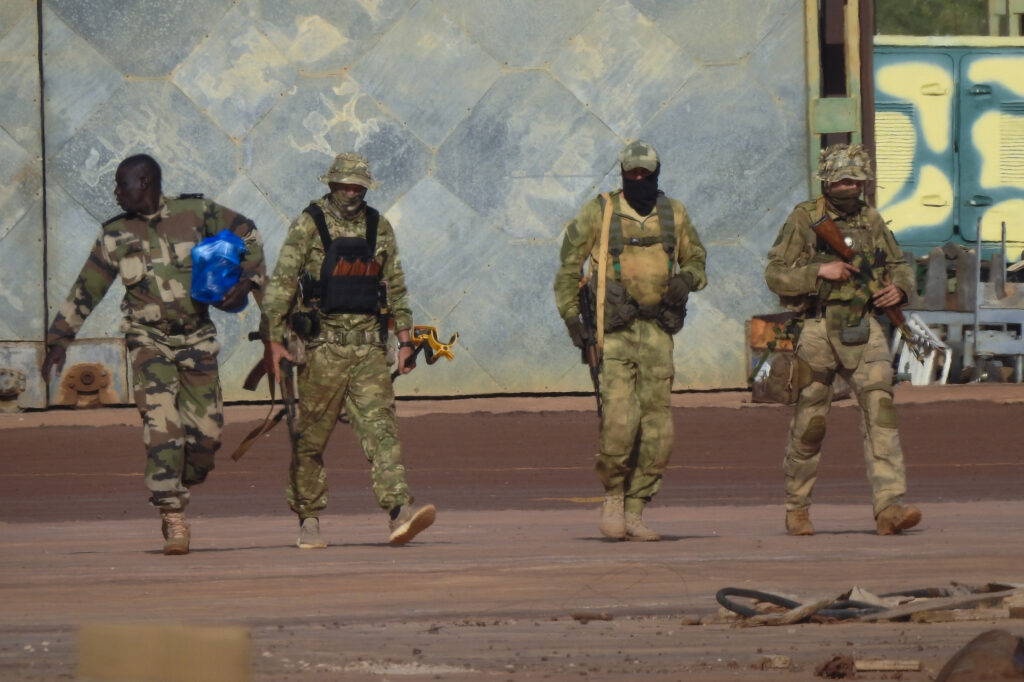During Donald Trump’s presidency, the US began classifying both China and Russia as ‘revisionist powers’, albeit with China labelled as a strategic competitor and Russia as a disruptive force. The underlying implication was clear: the US might have to fight a war on two fronts, thus providing Moscow and Beijing with an extra incentive to strengthen ties. At the same time, while the 2018 US Defense Strategy had talked of strengthening NATO and the need for a ‘strong and free Europe’ to deter Russia, President Trump was clear that allies should step up to the plate and shoulder more responsibilities, provoking fears among NATO members of a US lack of commitment.
By 2019, the Trump administration’s ‘love-in’ with Vladimir Putin appeared to be failing, with the US withdrawing from the INF Treaty after citing Russian violations of its obligations; Russia swiftly followed suit, accusing the US of having planned it all along. Europe was thus left feeling even more vulnerable, and then came the US announcement of a series of sanctions against the Nordstream 2 pipeline, which, apart from Russia, targeted Germany.
On taking office, President Biden later appeared to backtrack on the initial Trump-era policy, citing how the project was 90% completed.
And on his first tour of Europe, Biden studiously sought to move away from his predecessor’s erratic policy on Russia, and to forge a joint trans-Atlantic approach towards China through NATO and cooperation with the EU. The previous NATO Summit in 2019 had for the first time factored China into its strategic analysis with a recognition that ‘China’s growing influence and international policies present both opportunities and challenges that we need to address together as an Alliance’. Even so, the US’ European allies had been reluctant ever since to identify China any more specifically as a direct threat.
In this way, the 2021 NATO summit was at least a partial success for the new president in attaining greater consensus: China was now termed a ‘systemic challenge to the rules-based international order and to areas relevant to Alliance security’. The 2021 Summit Declaration also finally mentions cooperation between Russia and China, noting that China was ‘participating in Russian military exercises in the Euro-Atlantic’, and citing China’s military modernisation plans. Still, some in NATO remain reluctant to term China a ‘threat’ in the same vein as Russia.
The US-EU summit went even further, the joint statement citing the ‘elements of cooperation, competition and systemic rivalry’ with China, as both sides expressed concerns about ‘human rights violations in Xinjiang and Tibet; the erosion of autonomy and democratic processes in Hong Kong; economic coercion; disinformation campaigns; and regional security issues’ as well as ‘the situation in the East and South China Seas’. President Biden further attempted to cool down the commercial dispute between Boeing and Airbus, which for the US side at least was a response to China’s non-market practices and an attempt to prepare for the arrival of China’s narrow-body passenger jet C919.
Yet even before the US and the EU managed to coordinate their positions for the joint statement, Russia had reaffirmed its support for Chinese policies. In an interview with NBC, the Russian president not only confirmed that Russia does not consider China a threat, but Putin also actively and fiercely defended and explained Chinese policies on nuclear arms control, in Xinjiang and towards the Uyghur minority, as well as vis-a-vis Taiwan. Putin also suggested that the current Western policies were aimed at ‘destroying’ relations between China and Russia. Around the same time, the Russian ambassador to China, Andrey Denisov, speaking to the Global Times, juxtaposed events in Belarus and Hong Kong as examples of ‘colour revolutions’ inspired from abroad, and suggested that collaboration between Russia and China on information security would be an ideal way to combat the penetration of undesirable political agendas by external forces.
Given Russia’s willingness to ‘protect’ China, the key question is how Beijing will react to the NATO and EU declarations. The first opportunity to demonstrate its displeasure with European leaders dancing to Joe Biden’s tune might come in the autumn, during the Russian strategic exercises Zapad-21. For the last three consecutive years, Chinese troops have taken part in Moscow’s annual shows of force (albeit always as part of a broader range of foreign guests). From this perspective, the presence of Chinese troops in the 2021 edition would not come as a surprise. However, compared with other exercises organized by Russian military districts, the scenarios of the Zapad drills usually take a highly aggressive form, including the use of nuclear weapons.
It is thus not entirely surprising that Beijing chose a relatively ‘safe’ option. The two sides have begun discussions on conducting joint drills codenamed ‘Zapad/Vzaimodeistviye-21′, during which Russian troops from the Eastern Military District will practise on the territory of the PRC. This demonstrates Beijing’s unwillingness to provide explicit support to Russia’s aggressive posturing in Europe. It looks as if China does not intend to repeat its 2017 participation in joint maritime exercises in the Baltic Sea, interpreted in Europe as support for Moscow’s brinkmanship. Any Chinese participation in Russia’s Zapad exercises directed at NATO would certainly empower those actors in Europe that see the need for closer trans-Atlantic coordination of policy towards China. Beijing’s reluctance stands in clear contrast to Russian participation in joint Sino-Russian bomber patrols in 2019 and 2020 around Japan and South Korea.
Nonetheless, it remains the case that even if Chinese troops were to participate in the upcoming Russian exercises directed at NATO, this would not mean an automatic upgrade of the Sino-Russian relationship to the level of a working alliance. In many areas, what appear as coordinated Sino-Russian responses to Western policies are more often coincidental: for example, Russia has played up discussions with China and India to move away from SWIFT, but China has shown unwillingness to take joint action to circumvent Western sanctions, though it is true that both Russia and China have reduced their share of dollar trade.
Apart from asymmetric readiness to offer genuine (rather than political and rhetorical) support, there remain areas of potential tensions between the two: for example in the Arctic, where despite cooperation with China on energy, Russia, like the US, is not enthusiastic about China’s pretension to be a ‘near-Arctic’ state, and has striven to maintain diversity in terms of its partners here. In the South China Sea, Russia has also attempted to balance its relations with China with other partners like Vietnam. Rosneft conducted drillings in Vietnamese territorial waters, an area over which China claims sovereignty as part of the so-called 9-dash line. As of May 2021, the operations in Vietnam were handed over to another Russian SOE, Zarubezhneft. This demonstrates that to gain cooperation with Vietnam, Russia is not ready to risk the position of its key energy company in the Chinese market.
While both the EU and NATO have sounded the alarm regarding both Russian and Chinese challenges, some European partners had repeatedly suggested keeping lines open to Russia, with Germany and France now calling for the restitution of EU-Russia summits (and citing the growing Russia-China rapprochement as one reason for doing so).
Thus while references to China did find their way into NATO’s final communique, European leaders — including the French president and the German chancellor — were quick to emphasise that the Alliance was not prepared to treat China as a threat equal to Russia. Were Beijing to cultivate these more nuanced attitudes, it would be well advised to keep a certain distance from Moscow’s aggressive posturing. This would also allow China to continue blaming the US for organizing ‘anti-Chinese crusades’, while ‘forgiving’ Europeans. Beijing reacted to the NATO communique with predictable anger. However, China’s narrative also emphasised Beijing’s support for European integration and a belief in Europe’s strategic autonomy. This stands in contrast to Russia’s rather ferocious defence of China, and its echoing of Chinese condemnation of both the Quad and the Indo-Pacific concept as ‘destructive’.










